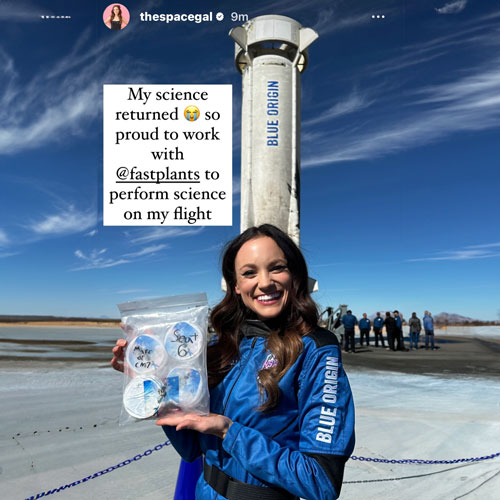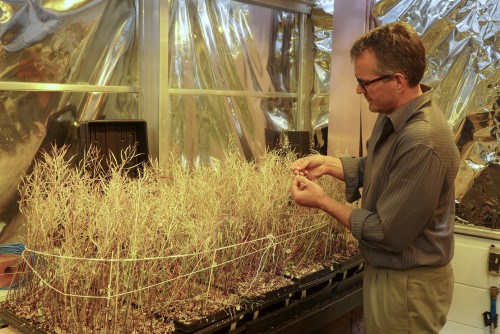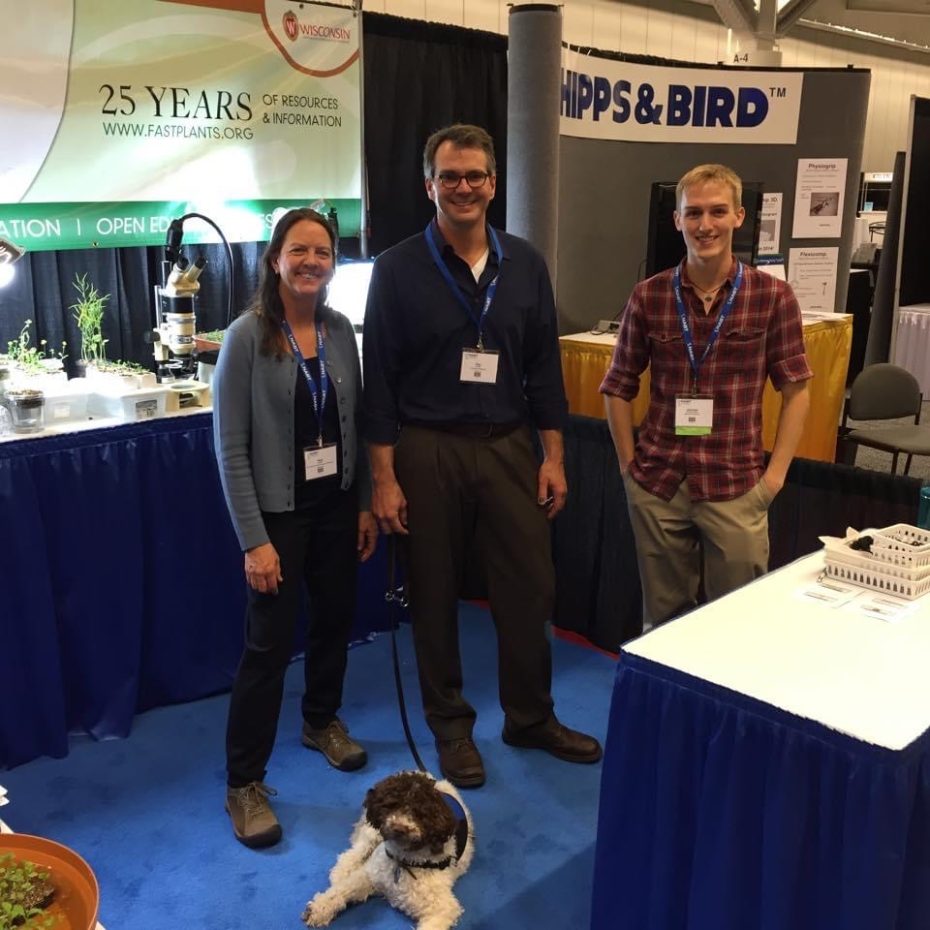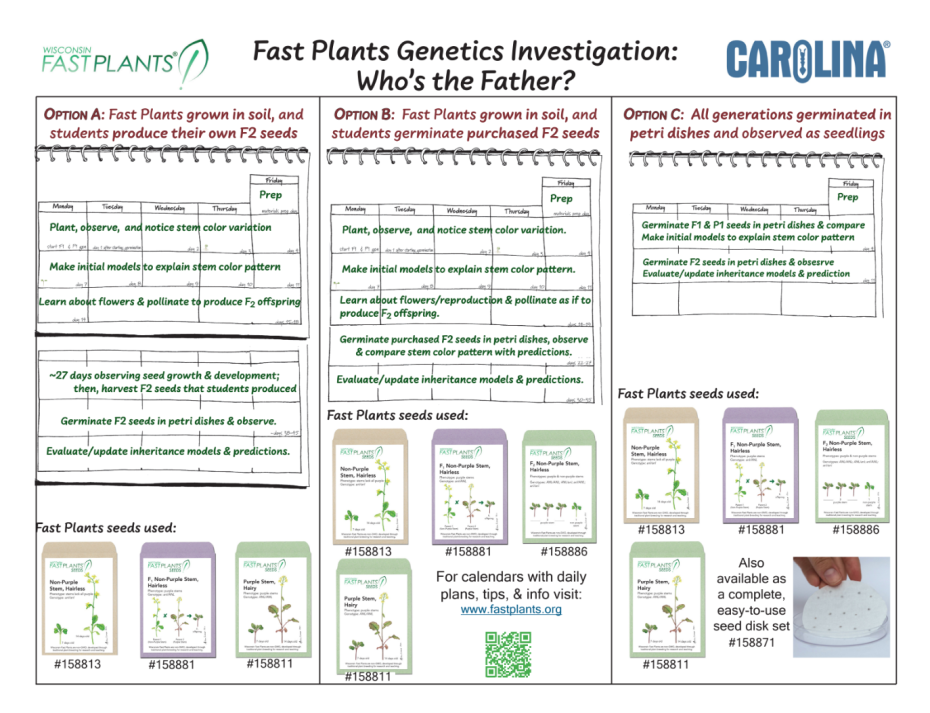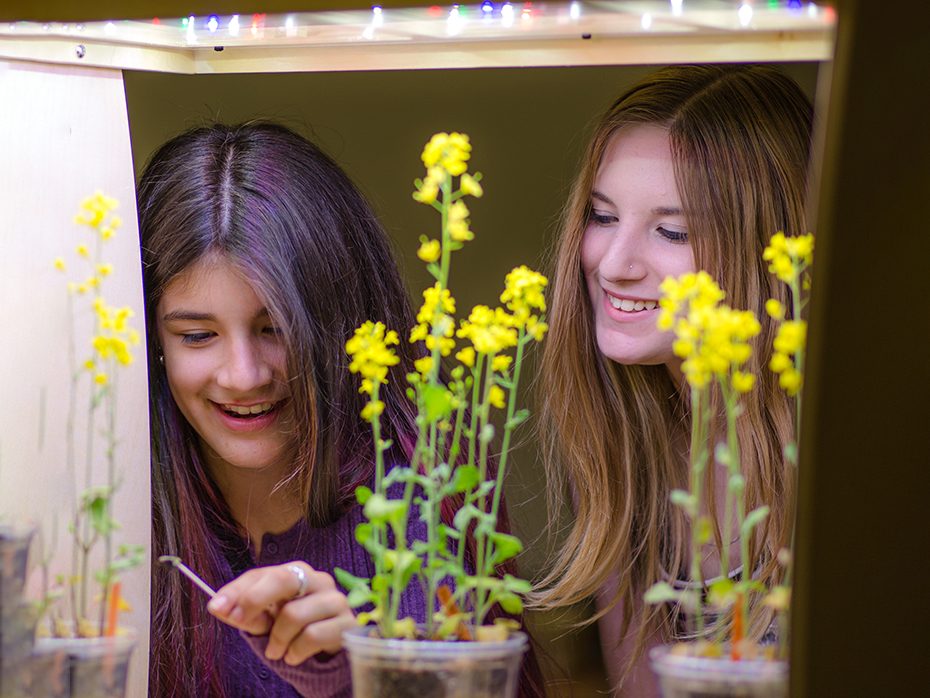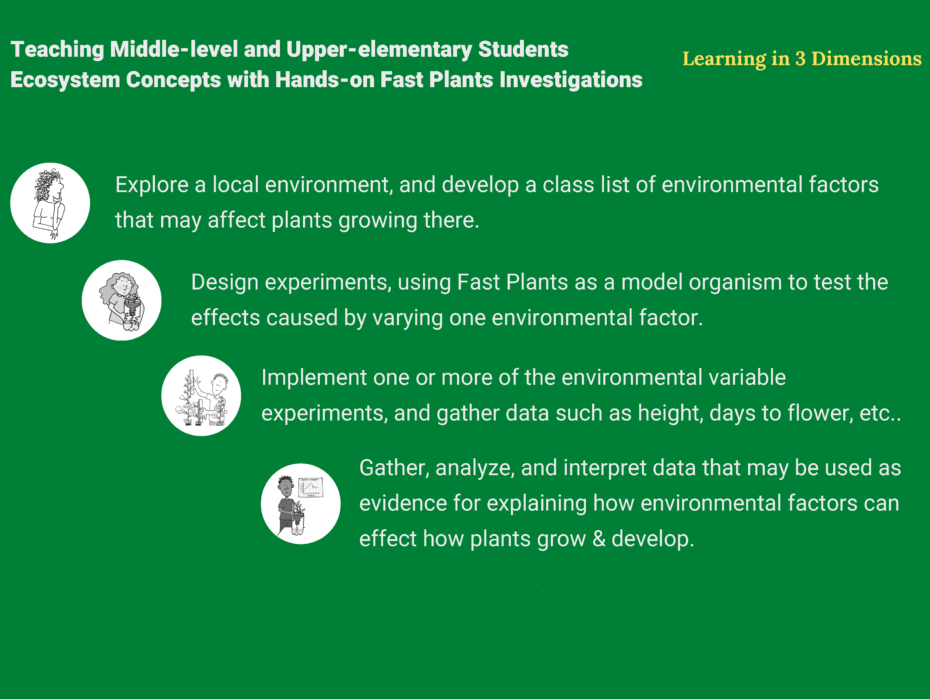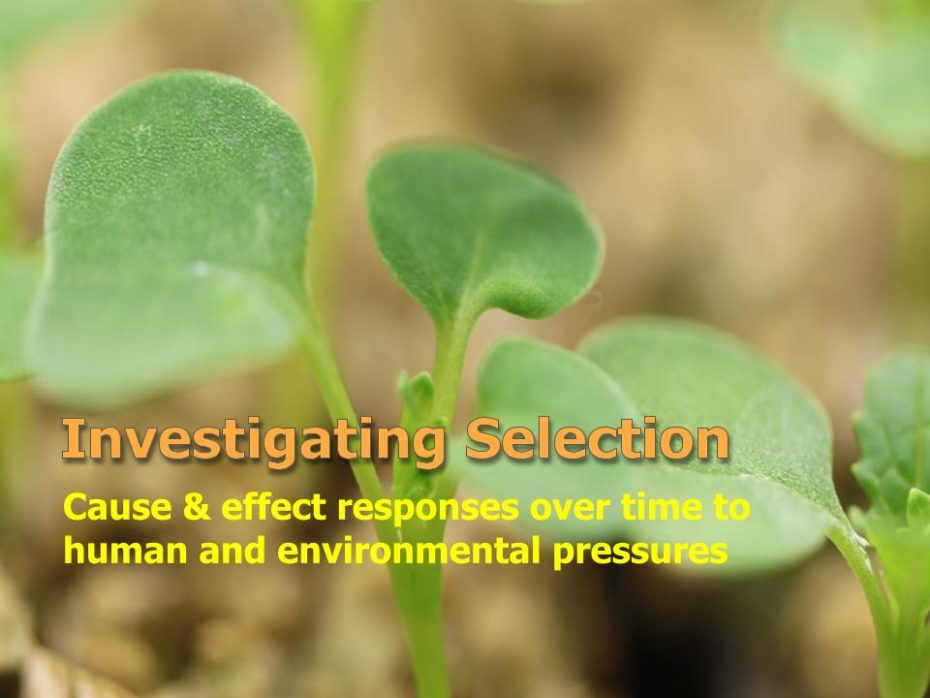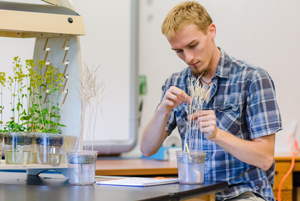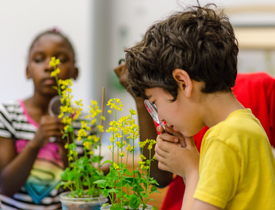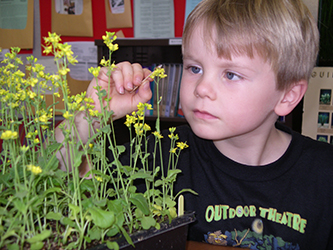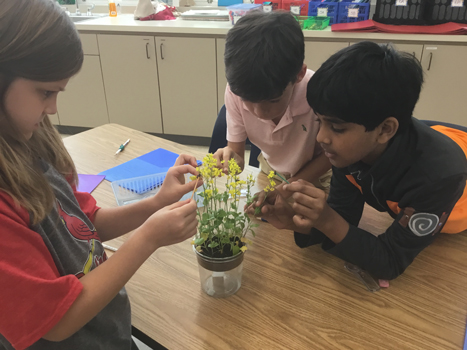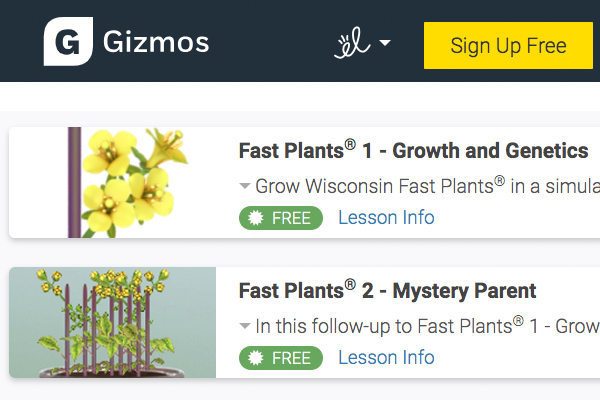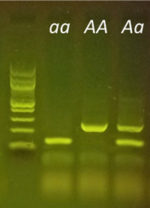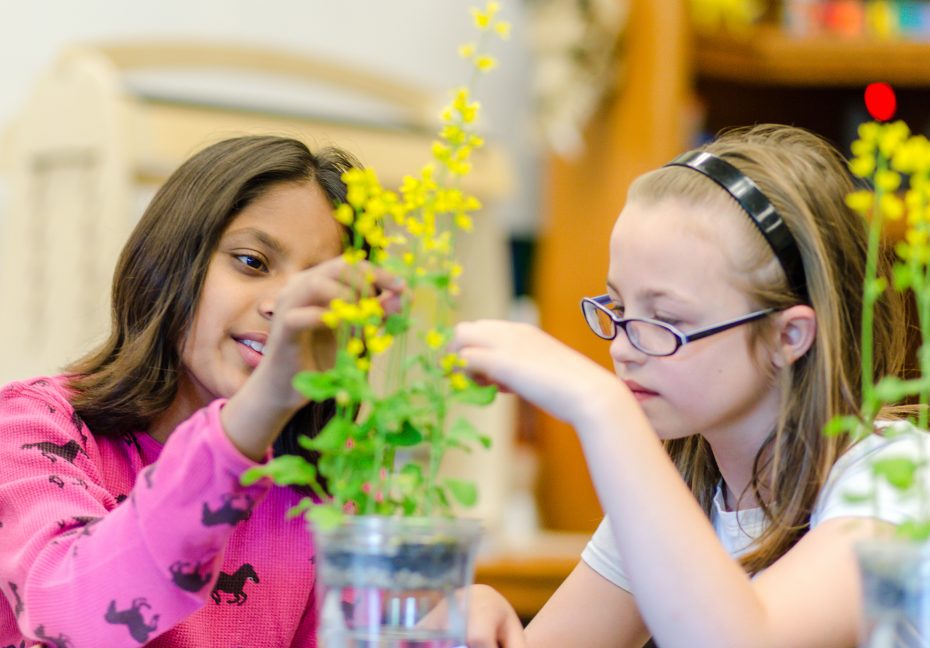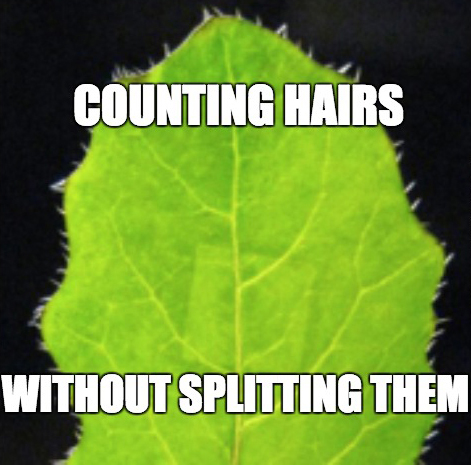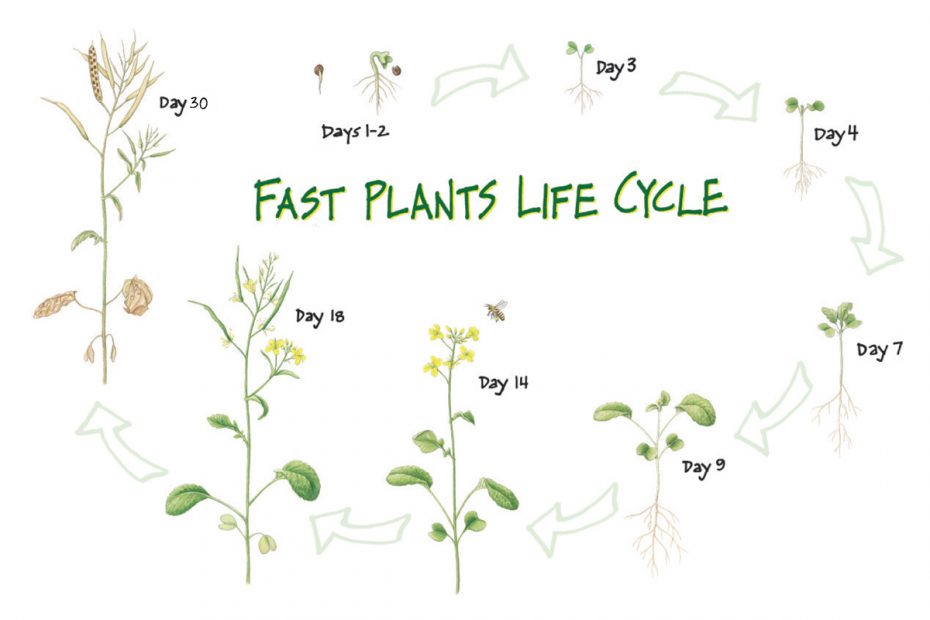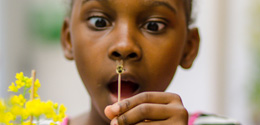Fast Plants in Space: Next Steps with Amanda Nguyen & Emily Calandrelli Long-term space exploration depends on many factors, and plant research in space is one of the most pressing. For decades, Wisconsin Fast Plants have helped scientists and educators explore biological mysteries, and now, they’ve returned to orbit, contributing to plant research in space. Blue Origin’s Fall 2024 mission …
Emily Calandrelli Teams Up to Take a Fast Plants Space Experiment on Blue Origin Flight
What if you got to put a Fast Plant Space Experiment on a rocket? What questions would you ask, and how would you design your experiment? We got that very opportunity when Emily Calandrelli, The Space Gal, offered us the chance to send seeds and experiments into orbit with her aboard Blue Origin’s NS-28 Mission. We also recently worked with …
Fast Plants in Space: Past, Present, and Future
Wisconsin Fast Plants® of the Department of Plant Pathology at UW-Madison are helping scientists explore how plants can thrive beyond Earth, and they’re paving the way for future space farming and sustainable life support systems in space. In fact, if you follow on Instagram #fastplantsinspace (@fastplants) we’ll be sharing about Fast Plants in flight on Blue Origin with Emily Calandrelli …
CTE: Plant Systems Career Pathway cultivates success with Fast Plants!
Future Depends on Plant Systems careers In the ever-evolving landscape of agriculture and plant sciences, the need for hands-on experiences growing plants has never been more critical. Career Technical Education (CTE) courses in the Plant Systems Pathway are foundational for future professionals in a wide variety of plant science fields, and one valuable addition that stands out is the incorporation …
Fast Plants Conferences 2023 NABT CAST ACTE Booth Resources
It’s the season of professional development conferences for teachers, educators, and our Fast Plants Team! Come visit our booths in the exhibit halls, they’re always packed with living Fast Plants, recommended resources, and good conversation. Jackson is attending NABT in Baltimore; Hedi and Dan are attending CAST in Houston and ACTE in Phoenix! This blog post summarizes what you’ll find …
Teach Inheritance with Fast Plants – Where to start?
Are you just deciding where to start to teach inheritance patterns with Fast Plants? Or maybe you’ve used Fast Plants before and are ready to add complexity to your inheritance investigations. Because we have so many resources available, choosing where to start can be a bit daunting. So, in this post we guide you through the decision making process and link to …
Seed Harvest – Identifying Mature Seeds
Producing Fast Plants seed for investigations that need offspring generations Seed harvest is an essential step in any Fast Plants experimental design that involves gathering evidence from offspring plants that students produce themselves. For example, you may have students conduct an inheritance investigation in which they inter-mate Fast Plants from an F1 generation to produce and observe the F2 offspring. …
New DIY Grow Lights for Fast Plants
Superior Grow Lights: Easy build your own What grow lights do I need for growing Fast Plants? That’s an important question. However, it also may be the start of a missed learning opportunity, if we’re not mindful. Consider for comparison your reaction when a student asks: “What do I need to know for the test?” Likely, your response includes hoping this …
Ecosystem dynamics investigations
Why hands-on ecosystem investigations? Ecosystems are highly complex systems; how can we support learners to grasp the effects on populations when one component of an ecosystem changes? Using a model ecosystem and model population in a hands-on investigation is an effective teaching strategy. In addition to making abstract ecosystem concepts more concrete, using Fast Plants as a model organism in …
New! Polycots Fast Plants Seed Line: Engaging & versatile for selection experiments
Polycot seedlings are easy to distinguish just a few days after germination! Our new Polycots seed line of Fast Plants features a trait that students can easily see at the seedling stage. In addition, we’ve developed a procedure for producing parental (Generation 1) and offspring (Generation 2) Polycot seed stocks, so it is not necessary for students to produce their own …
Preservice teachers on the frontline in ending plant blindness
Preservice teacher learners become effective teachers of science by developing strong content and content pedagogy knowledge that support all learners. In other words, the learning arc for preservice teacher learners is multilayered and jam-packed! So, it’s a tall order to hope that future teachers of science–elementary and secondary–are the solution to our national epidemic of plant blindness. “Plant blindness” may …
Hands-on learning with Fast Plants grows minds-on learning
While occupied by hands-on Fast Plants tending tasks in my role as co-director of the Wisconsin Fast Plants Program, I often listen to podcasts. Spoiler alert: I love podcasts about plants! No surprise, one of my favorites is Matt Candeias’ podcast, In Defense of Plants. Beyond my fascination with the wide array of topics Matt dives into in his podcasts, I appreciate …
Growing plants inspires a botanical path
Growing plants inspires everything from a solid appreciation for plants to a lifelong passion. Equally important to inspiration, growing plants can be key to developing citizens literate about our dependence on plants for life. With this in mind, we share here Daniel Murphy’s firsthand account of his experiences growing plants and becoming–in his words–“a bona fide plant nerd.” Daniel publishes a weekly blog titled, Awkward Botany, sharing his …
My first experience teaching with Fast Plants
Classroom teacher, Julie LaConte, tells about her first experience teaching with Fast Plants in this guest post. Thank you, Julie, for sharing your insights and experiences! Fall 2019 was my first experience teaching with Fast Plants, and plants are one of my least favorite topics to teach. After 18 years as an upper elementary and middle school science teacher, I have had my fair share …
NEW! ExploreLearning releases Wisconsin Fast Plant® simulation Gizmos®
Two Wisconsin Fast Plants® simulation Gizmos® were created as a collaboration between ExploreLearning and the Wisconsin Fast Plants Program. These simulations were designed to support a variety of investigations and growing Fast Plants. AND they replace the simulations created nearly two decades ago that can no longer function on modern operating systems! Simulations complement physically growing Fast Plants Using these Gizmos during or after growing Fast Plants, …
Three mistakes to avoid for growing healthy Fast Plants
Maybe you’ve grown Wisconsin Fast Plants before, or perhaps you’re just getting started–either way, we all want to grow strong, healthy Fast Plants. Nobody wants tall, spindly plants that need support or sickly plants that barely flower. No problem! Read on, and we’ll explain three common pitfalls to avoid when setting up growing conditions that support healthy Fast Plant growth. 1. Not …
Counting Leaf Hairs on Fast Plants for Selection Experiments
Hairs are not often a trait that we associate with plants. However, of all the traits that students might observe in a population of Fast Plants, we can learn a lot about variation and natural selection by counting and selecting for the number of hairs on a leaf margin. Selective breeding to increase (or decrease) hairiness can provide an excellent opportunity …
Teaching with the Fast Plants life cycle
Life Cycle Investigations Life cycle investigations with Wisconsin Fast Plants® provide rich context for teaching and learning a broad range of concepts. Though some think of the plant life cycle as limited to elementary level lessons, investigations and observations made during the Fast Plants life cycle are used worldwide at middle, high school and college levels, too. Crosscutting Concepts and life cycles Try to …
Can bee sticks sting?
Questioning whether or not dead bees including if bee sticks can sting comes up fairly often, and some folks also raise concerns about potential allergies. Here’s how UW-Madison’s entomologist, Dan Young, explained to us about the potential of getting a bee sting from a dead bee: I get this question once in a while, and the answer is clearly, NO. Dead …
- Page 1 of 2
- 1
- 2


